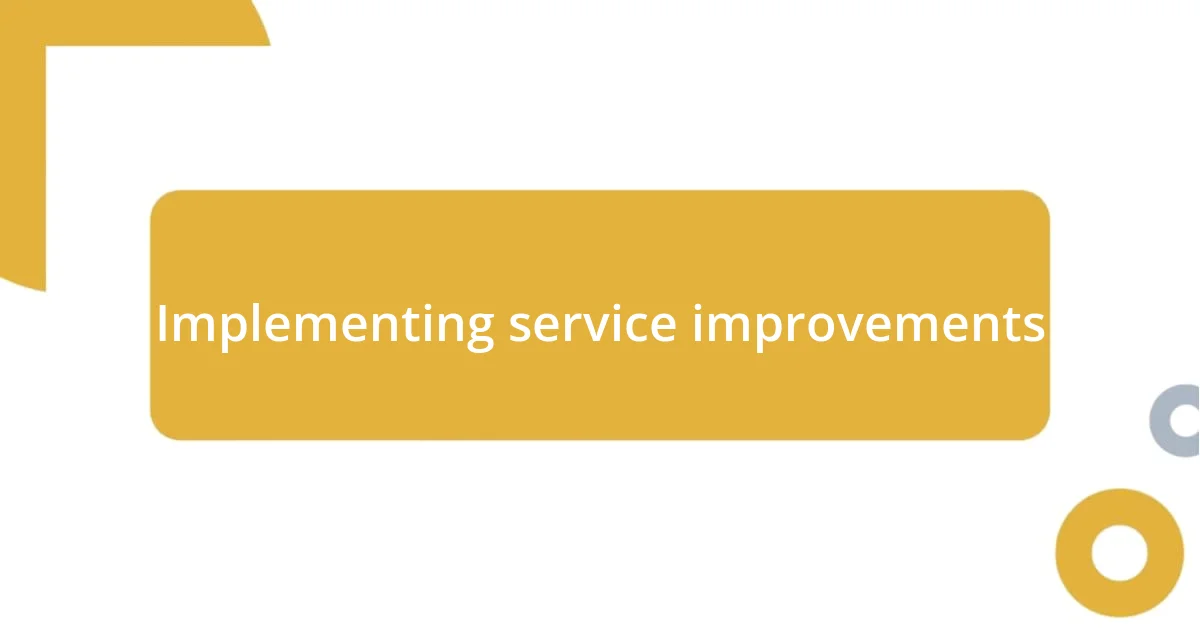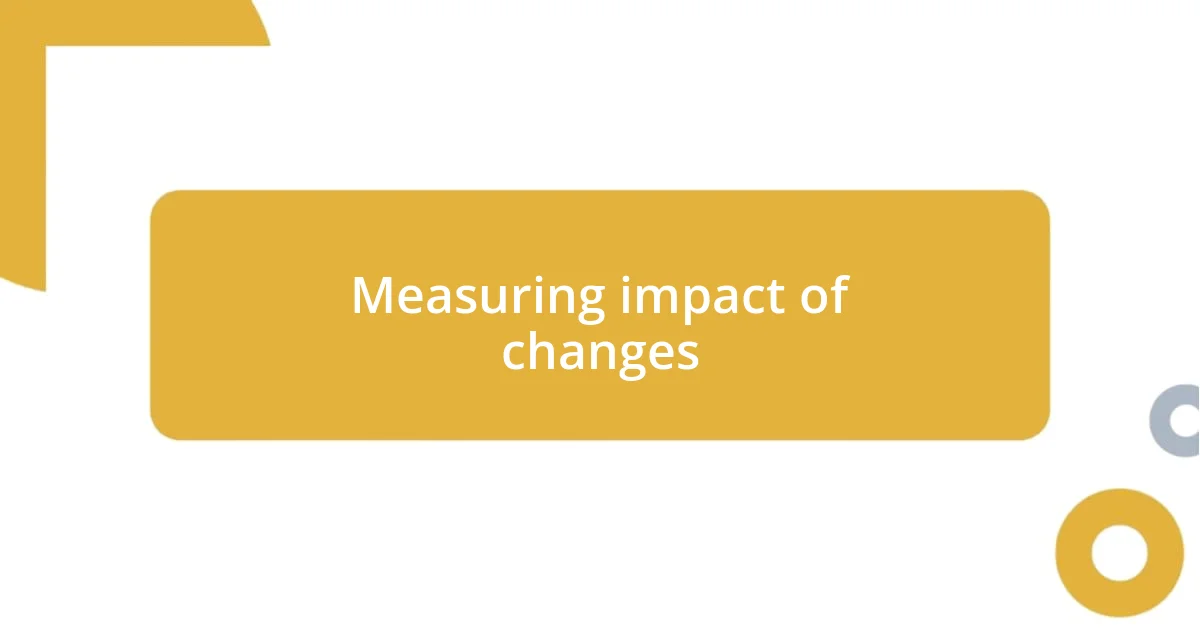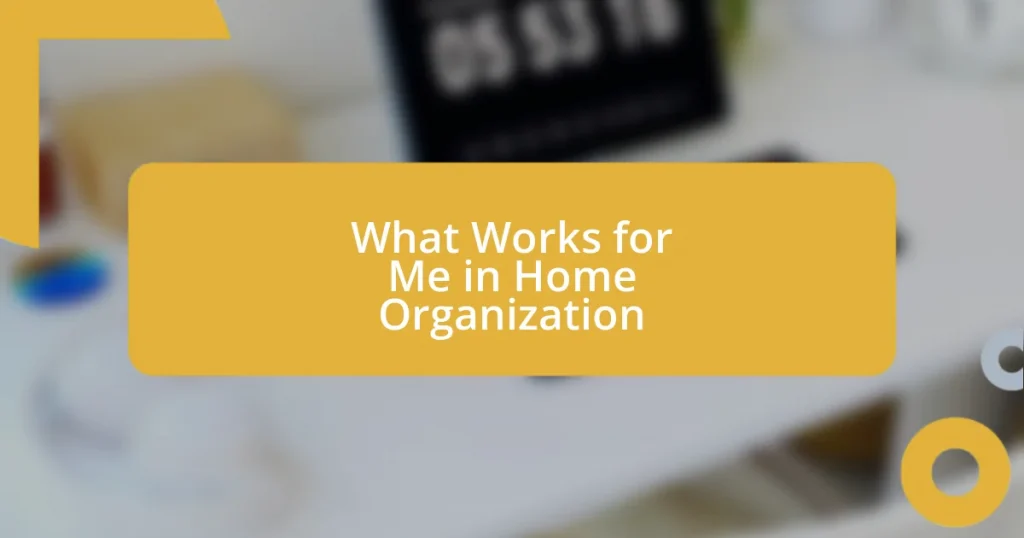Key takeaways:
- The service review process is crucial for identifying service strengths and weaknesses, emphasizing the importance of active listening to customer feedback.
- Implementing actionable improvements, such as streamlining communication and involving clients through advisory boards, can significantly enhance service quality and customer satisfaction.
- Continuous enhancement relies on regular feedback loops, fostering a culture of innovation, and ensuring adaptability to maintain momentum in service improvements.

Understanding service review process
The service review process is an essential journey that allows me to identify strengths and weaknesses in service delivery. I often think about a time when I sorted through feedback from clients; their insights led me to realize just how vital it is to listen actively. Have you ever noticed how even a small piece of feedback can spark significant change?
In my experience, a thorough review typically starts with gathering feedback from various sources, like customer surveys or direct interviews. Recently, I engaged with a few clients who took the time to share their thoughts, and their honest responses really struck a chord with me. It reminded me that understanding the customer’s experience is not just a task but a valuable conversation.
Next comes the analysis phase, where I dig deep into the data I’ve collected. I can recall when I visually mapped out customer comments and pinpointed recurring themes; it felt like uncovering hidden treasures. This process reinforces the importance of reflecting not just on the numbers but the stories behind them—what emotions are tied to that feedback? After all, numbers tell one story, but the sentiments of those involved tell another.

Identifying service evaluation criteria
Identifying the right criteria for evaluating services is integral to the review process. From my own experience, I’ve learned that these criteria must align closely with the customers’ expectations and the overall goals of the service. One time, while working on a project, I realized that metrics alone wouldn’t provide a complete picture; I needed to incorporate qualitative insights too.
Here’s a bullet list of useful evaluation criteria I consider:
- Customer Satisfaction: Gathering direct feedback about their experiences helps me understand their perspective.
- Quality of Service: Evaluating the consistency and reliability of services, often through client testimonies.
- Accessibility: Ensuring that services are easy to reach and use plays a pivotal role in overall satisfaction.
- Timeliness: Reflecting on how promptly services are delivered can reveal areas for improvement.
- Value for Money: Assessing whether clients feel they are getting their money’s worth reflects on pricing strategy and service quality.
By weaving these criteria thoughtfully into my evaluation process, I can develop a robust framework for meaningful service enhancement. Each aspect tells a story of its own, helping me to resonate more with clients’ needs.

Gathering customer feedback effectively
Gathering customer feedback effectively requires a thoughtful approach that values open communication. Personally, I find that utilizing multiple channels—such as online surveys, phone interviews, and even social media—creates a richer tapestry of insights. For instance, I once launched a quick survey on Twitter, and the immediate responses were enlightening! It’s fascinating to see how customers express themselves more freely in informal settings.
The timing of feedback collection is equally crucial. After a recent service, I decided to reach out to my clients while the experience was still fresh in their minds. This tactic allowed them to share their genuine feelings and specific details, which proved invaluable. I can vividly remember one client’s heartfelt comment about a seemingly minor aspect of service that made a significant difference to them; it drove home the point that every detail matters.
Lastly, embracing an iterative feedback loop is fundamental. When clients realize their input drives change, they’re more likely to engage continuously. For example, during a recent project, I created a feedback portal where users could share their thoughts at any time. The ongoing dialogue not only improved our services but also fostered a sense of community with our customers. Isn’t it amazing how proactive engagement can transform a simple transaction into a lasting relationship?
| Feedback Methods | Pros |
|---|---|
| Surveys | Quick data collection, can reach a wide audience |
| One-on-One Interviews | Deep insights, personal connection with customers |
| Social Media Engagement | Real-time feedback, informal conversations |

Analyzing feedback for insights
When it comes to analyzing feedback, I’ve discovered firsthand that the key lies in looking beyond the numbers. I remember sifting through a pile of survey results while working on a service improvement project. At first, I was so focused on the quantitative data that I almost missed a poignant comment from a customer about their emotional connection to our service. It struck me how a single phrase could encapsulate an entire experience—surely, those emotional insights should shape our decisions too, right?
I always set aside time to categorize feedback into themes. This process has been vital in my understanding of customer sentiments. For instance, one theme that frequently pops up is “trustworthiness.” Clients often mentioned feeling more at ease knowing we had reliable processes in place. It made me realize that addressing such underlying feelings could significantly elevate our service. Isn’t it fascinating how some insights unite people’s thoughts so profoundly?
Diving into the feedback can feel overwhelming at times, but it’s essential to extract actionable insights systematically. I prefer to visualize the data through colorful charts or mind maps—this transforms abstract feedback into a narrative I can connect with. Once, I created a poster of recurring feedback points and pinned it up in my workspace. Every day, I was reminded of the voices behind those comments, helping me stay focused on what truly matters to them. How do you keep customer voices alive in your everyday work?

Implementing service improvements
Implementing service improvements is where the real magic happens. In my experience, I’ve found that taking small, actionable steps can lead to significant changes. For example, after a service review, I noticed that response times were a common concern among customers. So, I made it a priority to streamline our communication channels by integrating a live chat feature. The immediate feedback was overwhelming; people felt heard and valued.
One memorable instance arose when I decided to create a customer advisory board. This group provided ongoing insights into our services and helped shape new policies. I distinctly remember the excitement during our first meeting, where a client shared a simple yet impactful idea—offering personalized follow-ups on service interactions. Implementing that suggestion not only improved satisfaction ratings but also created a deeper connection between our team and our clients. Isn’t it incredible how one idea can evolve into something transformative?
Throughout this journey, I emphasize the importance of training staff to embrace changes wholeheartedly. I initiated workshops where team members could learn about new tools and practices aimed at enhancing customer experiences. One particular session sparked a lightbulb moment when a team member shared their frustrations about outdated procedures. This discussion led to realignments that not only satisfied employee concerns but also created a more responsive service model. Have you ever noticed how making staff feel empowered can radiate throughout an organization?

Measuring impact of changes
Measuring the impact of changes is an area that I approach with both caution and curiosity. After implementing a new feedback system, I analyzed the data meticulously to see if customer satisfaction had improved. I vividly recall the rush of excitement when I saw a 15% increase in our service rating—a clear indicator that we were moving in the right direction. But then I ask myself: how do those numbers truly reflect the experiences behind them?
To dig deeper, I started conducting follow-up interviews with customers. One story stood out, where a client shared how the changes made them feel valued and listened to. Their words brought home the realization that metrics don’t always capture genuine emotional engagement. It’s this blend of quantitative and qualitative data that I believe offers a holistic view of our service effectiveness. Isn’t it interesting how real stories can often do more to illustrate success than pure statistics?
As I continually measure the impact of changes, I also look to my team for insight. Recently, we held a team retrospective meeting to discuss what adjustments had worked and what needed tweaking. I was taken aback when one team member shared their perspective on how the new service procedures had alleviated their workload, allowing them to focus more on customer interactions. This feedback not only validated our changes but also reminded me that the impact of our decisions ripples through both customer and employee experiences. How often do we pause to consider how our changes resonate with the team?

Sustaining continuous service enhancement
Sustaining continuous service enhancement requires a proactive approach and a commitment to adapting. I remember a time when we instituted regular feedback loops with our clients. Initially, I was apprehensive about whether clients would truly take the time to respond, but to my surprise, the engagement was robust. It became evident that customers genuinely appreciated the opportunity to contribute their thoughts and experiences. This ongoing dialogue not only surfaced valuable insights but also fostered a sense of ownership in our service enhancement journey. How can we ever underestimate the power of listening?
I’ve learned that cultivating a culture of innovation is crucial for ongoing improvement. Encouraging team brainstorming sessions has been a game changer for us. During one such session, a junior team member suggested a novel approach to streamlining our service processes that I never considered. The energy in that room was infectious! We all felt equally invested in the evolution of our services. Embracing ideas from all levels is vital; after all, the best solutions often come from unexpected places. Why not create a space where every voice is heard?
To ensure that our enhancements are not temporary, I emphasize the importance of adaptability. Each time we launch a new initiative, I often remind my team to keep an eye on both customer feedback and team morale. I recall a period when we rolled out a new system that, while efficient, raised some discomfort among the staff. Their concerns brought us back to the drawing board, showing us that listening internally can be just as vital as external feedback. In my experience, this continuous loop of evaluation helps maintain momentum—how else can we truly sustain progress?















